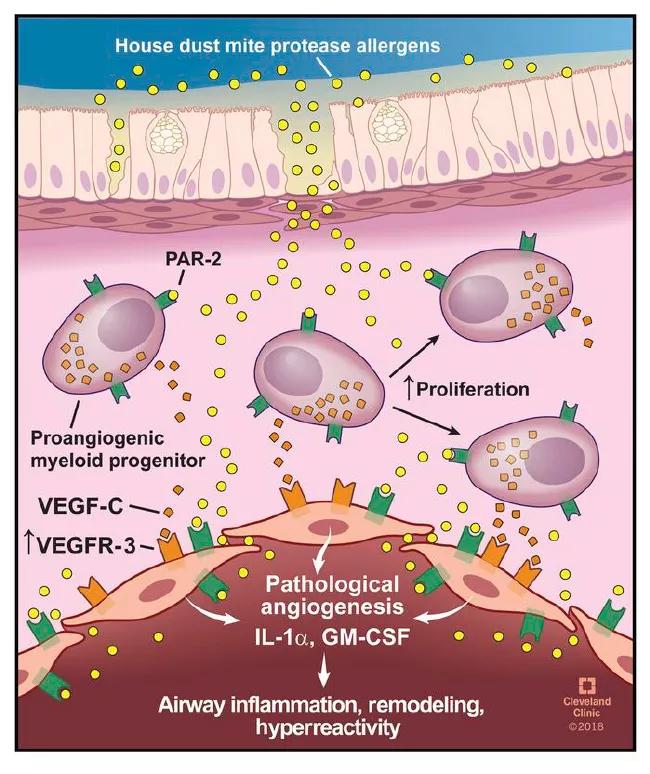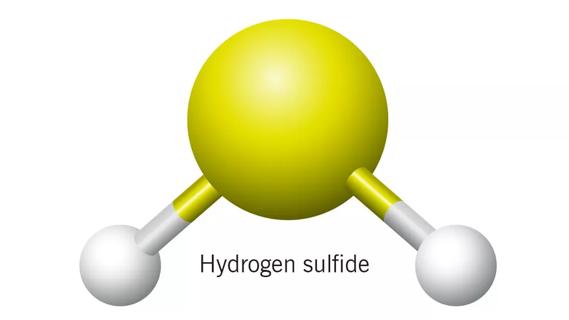Endothelial cells can contribute to the onset of asthma
Cleveland Clinic researchers have uncovered for the first time how endothelial cells can contribute to the onset of asthma. While most research over the past 50 years has focused on the epithelium that lines the airways or the immune cells that surround the airways, this study shows how the vascular endothelium contributes to the onset of airway inflammation.
Cleveland Clinic is a non-profit academic medical center. Advertising on our site helps support our mission. We do not endorse non-Cleveland Clinic products or services. Policy
Previous studies have shown that activation of endothelial cells is one of the first events to occur that trigger asthma. Furthermore, asthmatic airways have long been known to contain more blood vessels than healthy airways, and the number of these vessels increases with disease severity.
The team of researchers — led by Kewal Asosingh, PhD, SCYM(ASCP), staff in the Department of Inflammation and Immunity, and first author on the study, and Serpil Erzurum, MD, Chair, Lerner Research Institute — describes for the first time how these seemingly unrelated processes, the activation of endothelial cells and angiogenesis, might work in tandem to drive asthma.
In this study, the researchers induced an asthmatic episode in a preclinical model by exposure to house dust mite extract, a common airborne allergen that is a primary trigger of childhood asthma.
They found that the house dust mite allergen binds to and activates a receptor molecule called PAR-2 (protease-activated receptor 2). PAR-2 is found on the surface of two types of cells — endothelial cells and proangiogenic hematopoietic progenitor cells (PACs). PACs play an essential role in angiogenesis.
The activated PAR-2 directs PACs to release VEGF-C (vascular endothelial growth factor C). Upon its release, VEGF-C binds to VEGF3 (vascular endothelial growth factor 3). This protein binding leads to new blood vessel formation and also increases the production and release of pro-inflammatory cytokines.
In this way, allergen-driven PAR-2 activation sets into motion a cascade of cellular events that contributes not only to angiogenesis but also to stimulation of the immune system. This immune cell activation and proliferation contributes to the onset and/or severity of symptoms commonly associated with asthma, including coughing, wheezing, shortness of breath and chest tightness — all byproducts of inflamed and obstructed airways.
“This discovery shows for the first time that non-immune cells in the airway wall can sense airborne allergens and signal the activity of immune cells,” explains Dr. Asosingh. “What’s equally exciting is that we had success in blocking this pathway in a preclinical model of asthma, which led to decreased airway inflammation.”

HDM protease allergen sensing by mucosal PACs and endothelial cells. HDM proteases penetrate deep into the airway mucosa where they activate PACs and endothelial cells via PAR-2 binding and induce the release of VEGF-C, GM-CSF, and IL-1α, resulting in airway inflammation, remodeling, and hyperreactivity. Illustration reprinted with the permission of the American Society for Clinical Investigation.
The researchers administered an agent called MAZ51 to a preclinical model of asthma exposed to house dust mite extract. MAZ51 works by inhibiting VEGF-C from binding to and activating VEGF3. This inhibition resulted in reduced blood vessel formation and airway inflammation.
“What we have now is both an understanding of what’s happening at a cellular and molecular level and, importantly, a completely new pathway to target for the treatment of asthma,” says Dr. Erzurum. While additional studies are needed, the team hopes to one day develop a drug that disrupts this disease-driving mechanism, carrying this preclinical research into clinical investigation and trials.
The study was published in the Journal of Clinical Investigation and funded in part by grants from the National Heart, Lung, and Blood Institute.
Dr. Asosingh is Scientific Director of Flow Cytometry at Cleveland Clinic. Dr. Erzurum holds the Alfred Lerner Memorial Chair in Innovative Biomedical Research, is staff in the Lerner Research Institute and a practicing pulmonologist in the Respiratory Institute.

Large-scale joint study links elevated TMAO blood levels and chronic kidney disease risk over time

Investigators are developing a deep learning model to predict health outcomes in ICUs.

International collaboration is most genetically diverse study of the disease to date

Preclinical work promises large-scale data with minimal bias to inform development of clinical tests

Cleveland Clinic researchers pursue answers on basic science and clinical fronts

Study suggests sex-specific pathways show potential for sex-specific therapeutic approaches

Cleveland Clinic launches Quantum Innovation Catalyzer Program to help start-up companies access advanced research technology

Research project aims to pinpoint biomarkers that could speed diagnosis